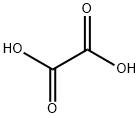Pentaerythritol
Synonym(s):2,2-Bis(hydroxymethyl)-1,3-propanediol;Pentaerythritol
- CAS NO.:115-77-5
- Empirical Formula: C5H12O4
- Molecular Weight: 136.15
- MDL number: MFCD00004692
- EINECS: 204-104-9
- SAFETY DATA SHEET (SDS)
- Update Date: 2025-12-17 09:50:05

What is Pentaerythritol?
Chemical properties
Pentaerythritol is a white crystalline solid. Odorless.
The Uses of Pentaerythritol
In the manufacture of pentaerythritol tetranitrate; alkyd resins in surface-coating compositions; pentaerythritol triacrylate and protective coatings; insecticides; pharmaceuticals
The Uses of Pentaerythritol
Pentaerythritol is a compound most commonly used in cosmetics (in its rosinate form). It is used as a skin conditioning agent (used as part of a cream base in lotions), and is also used to increase viscosity of cosmetic formulations.
The Uses of Pentaerythritol
Pentaerythritol is a versatile starting material to synthesize various dendrimers and star-shaped polymers. It is widely used in the preparation of flame-retardant epoxy resins and polymer composites. It is also used in the synthesis of the vasodilator, pentaerythritol tetranitrate (PETN).
Definition
pentaerythritol: white crystallinecompound, C(CH2OH)4; m.p.260°C; b.p. 276°C (30 mmHg). It isused in making the explosive pentaerythritoltrinitrate and in producingresins and other organicproducts.
General Description
Odorless white solid. Sinks and mixes slowly with water.
Air & Water Reactions
Water soluble.
Reactivity Profile
Pentaerythritol is an alcohol. Pentaerythritol is incompatible with the following: Organic acids, oxidizers [Note: Explosive compound is formed when a mixture of PE & thiophosphoryl chloride is heated.] .
Reactivity Profile
The four primary hydroxyl groups undergo the normal reactions of OH groups. Pentaerythritol is oxidized to tris (hydroxymethyl)acetic acid by air in the presence of platinum or palladium.
Health Hazard
Non-toxic; no symptoms likely
Flammability and Explosibility
Not classified
Safety Profile
Mildly toxic by ingestion. A nuisance dust. Flammable from heat or flame or oxidizers. Wxtures with thiophosphoryl chloride react when heated to form a product that ignites and then explodes on contact with air. Used in coatings, stabdizers, explosives, P.E.T.N resins, drugs, insecticides, and lubricants When heated to decomposition it emits acrid smoke and irritating fumes
Potential Exposure
Pentaerythritol is used in coatings and stabilizers; in the formation of alkyd resins and varnishes. It is used as an intermediate in the manufacture of plasticizers, explosives (PETN),and pharmaceuticals.
Shipping
UN1987 Alcohols, n.o.s., Hazard Class: 3; Labels: 3-Flammable liquid.
Purification Methods
Reflux pentaerythritol with an equal volume of MeOH, then cool, and the precipitate is collected and dried at 90o. It can also be crystallised from dilute aqueous HCl. After sublimation under high vacuum at 200o it has m 265.5o. Its solubility in H2O is 10%. [Beilstein 18 III 2361, 1 IV 2812.]
Incompatibilities
Dust may form explosive mixture with air. Incompatible with oxidizers (chlorates, nitrates, peroxides, permanganates, perchlorates, chlorine, bromine, fluorine, etc.); contact may cause fires or explosions. Keep away from alkaline materials, strong acids, organic acids, strong bases. Aquesous solution is acidic. Explosive compound is formed when a mixture of Pentaerythritol and thiophosphoryl chloride (CAS 3892-91-0) is heated.
Properties of Pentaerythritol
| Melting point: | 253-258 °C (lit.) |
| Boiling point: | 276 °C/30 mmHg (lit.) |
| Density | 1.396 |
| vapor pressure | <1 mm Hg ( 20 °C) |
| refractive index | 1.548 |
| Flash point: | 240 °C |
| storage temp. | Store below +30°C. |
| solubility | H2O: 0.1 g/mL, clear, colorless |
| form | Crystals |
| pka | 13.55±0.10(Predicted) |
| color | White |
| PH | 3.5-4.5 (100g/l, H2O, 35℃) |
| Odor | odorless |
| Water Solubility | 1 g/18 mL (15 ºC) |
| Sensitive | Hygroscopic |
| Merck | 14,7111 |
| BRN | 1679274 |
| Exposure limits | ACGIH: TWA 10 mg/m3 OSHA: TWA 15 mg/m3; TWA 5 mg/m3 NIOSH: TWA 10 mg/m3; TWA 5 mg/m3 |
| Stability: | Stable. Incompatible with strong acids, strong oxidizing agents, acid chlorides, acid anhydrides. Combustible. |
| CAS DataBase Reference | 115-77-5(CAS DataBase Reference) |
| NIST Chemistry Reference | 1,3-Propanediol, 2,2-bis(hydroxymethyl)-(115-77-5) |
| EPA Substance Registry System | Pentaerythritol (115-77-5) |
Safety information for Pentaerythritol
| Signal word | Warning |
| Pictogram(s) |
 Exclamation Mark Irritant GHS07 |
| GHS Hazard Statements |
H302:Acute toxicity,oral H315:Skin corrosion/irritation H319:Serious eye damage/eye irritation H335:Specific target organ toxicity, single exposure;Respiratory tract irritation |
| Precautionary Statement Codes |
P261:Avoid breathing dust/fume/gas/mist/vapours/spray. P301+P312:IF SWALLOWED: call a POISON CENTER or doctor/physician IF you feel unwell. P302+P352:IF ON SKIN: wash with plenty of soap and water. P304+P340:IF INHALED: Remove victim to fresh air and Keep at rest in a position comfortable for breathing. P305+P351+P338:IF IN EYES: Rinse cautiously with water for several minutes. Remove contact lenses, if present and easy to do. Continuerinsing. |
Computed Descriptors for Pentaerythritol
| InChIKey | WXZMFSXDPGVJKK-UHFFFAOYSA-N |
Pentaerythritol manufacturer
Rashtriya Chemicals & Fertilizers Ltd.
New Products
4,4-Difluoropiperidine hydrochloride tert-butyl 9-methoxy-3-azaspiro[5.5]undecane-3-carboxylate Indole Methyl Resin N-Isopropylurea N,N-Dicyclohexylcarbodiimide(DCC) MELDRUMS ACID 5-METHYLISOXAZOLE-4-CARBOXYLIC ACID Magnessium Bis glycinate Zinc ascorbate 1-bromo-2-butyne 2-acetamidophenol 9(10H)-anthracenone Erythrosin B, 4-Piperidinopiperidine 2-((4-morpholinophenylamino) (methylthio) methylene) malononitrile 2,4-dihydroxybenzaldehyde 3-(4-morpholinophenylamino)-5-amino-1H-pyrazole-4-carbonitrile Methyl 2-methylquinoline-6-carboxylate 2,6-dichloro-4-nitropyridine 4-Bromo-2-chlorobenzonitrile 2-(benzylamino)acetic acid hydrochloride 4-(tert-Butoxycarbonylamino)but- 2-ynoic acid 3,4-dihydro-2H-benzo[b][1,4]dioxepine 1-Phenyl-1-cycloprppanecarboxylicacidRelated products of tetrahydrofuran








You may like
-
 Pentaerythritol CAS 115-77-5View Details
Pentaerythritol CAS 115-77-5View Details
115-77-5 -
 Pentaerythritol 95% CAS 115-77-5View Details
Pentaerythritol 95% CAS 115-77-5View Details
115-77-5 -
 PENTAERYTHRITOL For Synthesis CAS 115-77-5View Details
PENTAERYTHRITOL For Synthesis CAS 115-77-5View Details
115-77-5 -
 Pentaerythritol Chemical PowderView Details
Pentaerythritol Chemical PowderView Details
115-77-5 -
 Penta Erythritol Chemical, For Industrial, Pack Size: 25 KgView Details
Penta Erythritol Chemical, For Industrial, Pack Size: 25 KgView Details
115-77-5 -
 PentaerythritolView Details
PentaerythritolView Details
115-77-5 -
 Mono Pentaerythritol CAS 115-77-5 High Purity 99%, 98%, 95%, 88%View Details
Mono Pentaerythritol CAS 115-77-5 High Purity 99%, 98%, 95%, 88%View Details
115-77-5 -
 PentaerythritolView Details
PentaerythritolView Details
115-77-5
